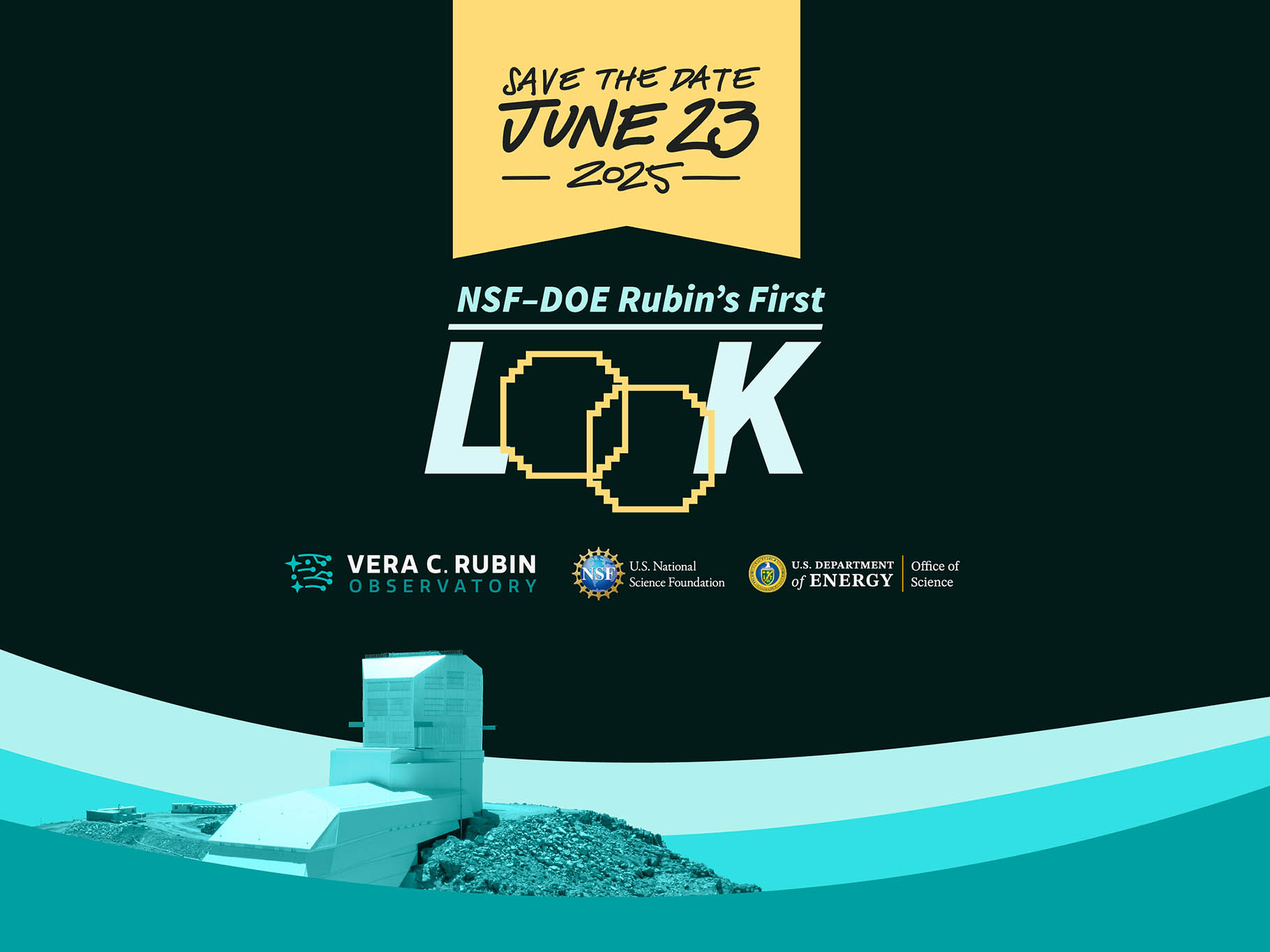Mark Your Calendars! NSF–DOE Vera C. Rubin Observatory Will Unveil First Look Images on 23 June 2025

We invite you to attend the live stream of NSF–DOE Vera C. Rubin Observatory’s First Look event, taking place on 23 June 2025 at 11:00 a.m. EDT. At this international celebration the Rubin Observatory team will unveil the observatory’s first spectacular images. The event will be live streamed via YouTube in English and Spanish. Links to the live streams will be made available on rubinobservatory.org.
Want to attend an in-person celebration? Hundreds of venues around the globe will be hosting watch parties that include a public viewing of the live stream. Check out the Rubin First Look Watch Party website to find a location near you.
NSF–DOE Vera C. Rubin Observatory is jointly funded by the U.S. National Science Foundation and the U.S. Department of Energy’s Office of Science .
The First Look event will feature the unveiling of a set of large, ultra-high-definition images and videos that showcase Rubin’s extraordinary capabilities to the world for the first time. This will mark the beginning of a new era in astronomy and astrophysics.
These images and videos will be the first of many that Rubin will release over the course of the next decade as it conducts the Legacy Survey of Space and Time (LSST). Equipped with the world’s largest digital camera, Rubin will sweep the entire visible southern sky every three to four nights. In doing so, Rubin will produce the most detailed time-lapse view of the cosmos that has ever existed.
This unique movie will bring the cosmos to life, yielding a treasure trove of discoveries: asteroids and comets, pulsating stars, and supernova explosions. With Rubin data, we will better understand the Universe, chronicle its evolution, delve into the mysteries of dark energy and dark matter, and reveal answers to questions we have yet to imagine.
AURA is the managing organization for the Rubin Construction project and NSF NOIRLab. Rubin Observatory is a joint Program of NSF NOIRLab and SLAC National Accelerator Laboratory (SLAC), who will cooperatively operate Rubin.
More Information
NSF–DOE Vera C. Rubin Observatory is a joint initiative of the U.S. National Science Foundation (NSF) and the U.S. Department of Energy’s Office of Science (DOE/SC). Its primary mission is to carry out the Legacy Survey of Space and Time, providing an unprecedented data set for scientific research supported by both agencies. Rubin is operated jointly by NSF NOIRLab and SLAC National Accelerator Laboratory. NSF NOIRLab is managed by the Association of Universities for Research in Astronomy (AURA) and SLAC is operated by Stanford University for the DOE. France provides key support to the construction and operations of Rubin Observatory through contributions from CNRS/IN2P3. Rubin Observatory is privileged to conduct research in Chile and gratefully acknowledges additional contributions from more than 40 international organizations and teams.
